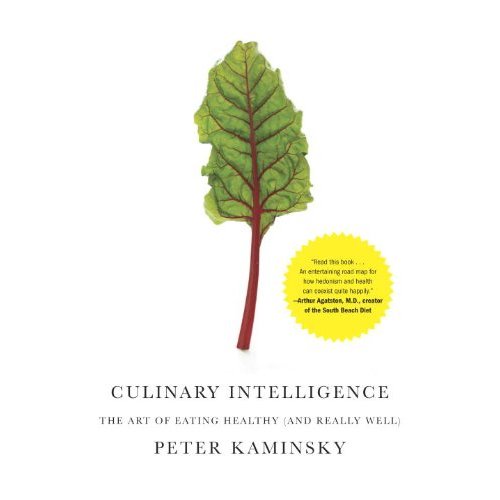

Just as I was about to extol the many virtues of Peter Kaminsky's new book, brilliantly titled Culinary Intelligence: The Art of Eating Healthy (and Really Well), I happened upon a dose of Culinary Insanity in the food pages of today's New York Times. In an article about an exemplary initiative to teach doctors about nutrition, a recipe appears that is so unhealthy as to render the project questionable.
Who's in charge here? Who makes the decisions about what is healthy? And why would anyone choose a drink that contains more sugar than a Coke to illustrate the idea behind healthful food consumption? Not only does the simple recipe for limeade contain 24 grams of refined white sugar per serving (that's 90 calories worth of sugar alone), but it is made with peanuts, which may trigger a bout of allergies for some. Really, what were they thinking? It reminds me a bit of the book Why French Women Don't Get Fat, where the premise is certainly laudable -- eat small portions of delicious things -- but, alas, there was not a nutritional analysis in sight and many of the recipes that looked healthy were not, even in petit portions.
That said, as I have written several books on healthy eating, Healthy 1-2-3, Low Carb 1-2-3 (the only book with recipes that are low carb and low cal), and Eat Fresh Food: Awesome Recipes for Teen Chefs, I know the many vicissitudes in creating recipes that are healthy and delicious. It comes with decades of experience working with nutritionists, clinical herbalists, and creating one of the country's first "spa cuisines" at the Rainbow Room many years ago. The program extolled in the New York Times today -- a joint effort of the Harvard School of Public Health, the Culinary Institute of America, and Healthy Kitchens/Healthy Lives created by Dr. Eisenberg eight years ago, to teach young medical professionals about healthy cooking, is certainly worthwhile. It is a good idea for doctors to know something about the relationship between food and nutrition. Yet it is incumbent upon anyone who invokes the BRAND of healthy cooking to define its terms and make sure the public gets the right information.
That said, there's a wonderful juncture of ideologies in Peter Kaminsky's Culinary Intelligence (published next month by Alfred A. Knopf) and Dr. Eisenberg's approach to healthy food. It's all about flavor. Dr. Eisenberg says "flavor is a health issue," and Mr. Kaminsky unfurls a culinary marker called FPC, or flavor per calorie. If we satisfy our cravings with fresh foods that maximize flavor, then we might be sated with less and enjoy our food more. Many studies have shown that processed foods, full of unpronounceable additives, do not satisfy us either gastronomically or spiritually, and actually create the desire for more, and more, of the unhealthy stuff. Mr. Kaminsky, a well-known food writer and critic, was rejected from a life insurance policy because he was pre-diabetic. And that is what led him to write his treatise. It is not a diet book, but a book about pursuing the pleasures of the table as the path to good health. I think Dr. Eisenberg would agree. But they depart here: Mr. Kaminsky says the three most important foods or ingredients to avoid are sugar, refined (white) flour, and trans fats, while Dr. Eisenberg eschews butter (note: butter can be used with culinary intelligence as it is a terrific flavor carrier and a little goes a long way), and seems to be okay with sugary drinks (i.e. today's recipe for Peanut Limeade.) Culinary Intelligence also pursues the deep complex flavors imparted by umami (a flavor-enhancing glutamate that exists in many foods -- known as the "fifth taste"), and the soul-satisfying approach to healthy food by the simple notion of mindfulness and pleasure and, of course, using great ingredients.
Needless to say, good health is also about good exercise. I just learned this morning that after 28 days in "boot camp" my son lost 10 pounds, 1 percent of body fat, and 3 inches off his waistline!
The bottom line is that not only should doctors know about healthy recipes, and nutritionists should know how to cook, but most importantly the chefs who promote healthy food must know something about nutrition.
Rozanne Gold is an award-winning chef and author of "Eat Fresh Food: Awesome Recipes for Teen Chefs;" "Healthy 1-2-3," and "Radically Simple."
Rozanne can be found on Facebook at www.facebook.com/RozanneGold.